Affiliate disclosure: This post may contain affiliate links. Please see our Privacy Policy.
Lady’s Thumb (Persicaria maculosa and other Persicaria) is a common everyday garden weed that’s both edible and medicinal.
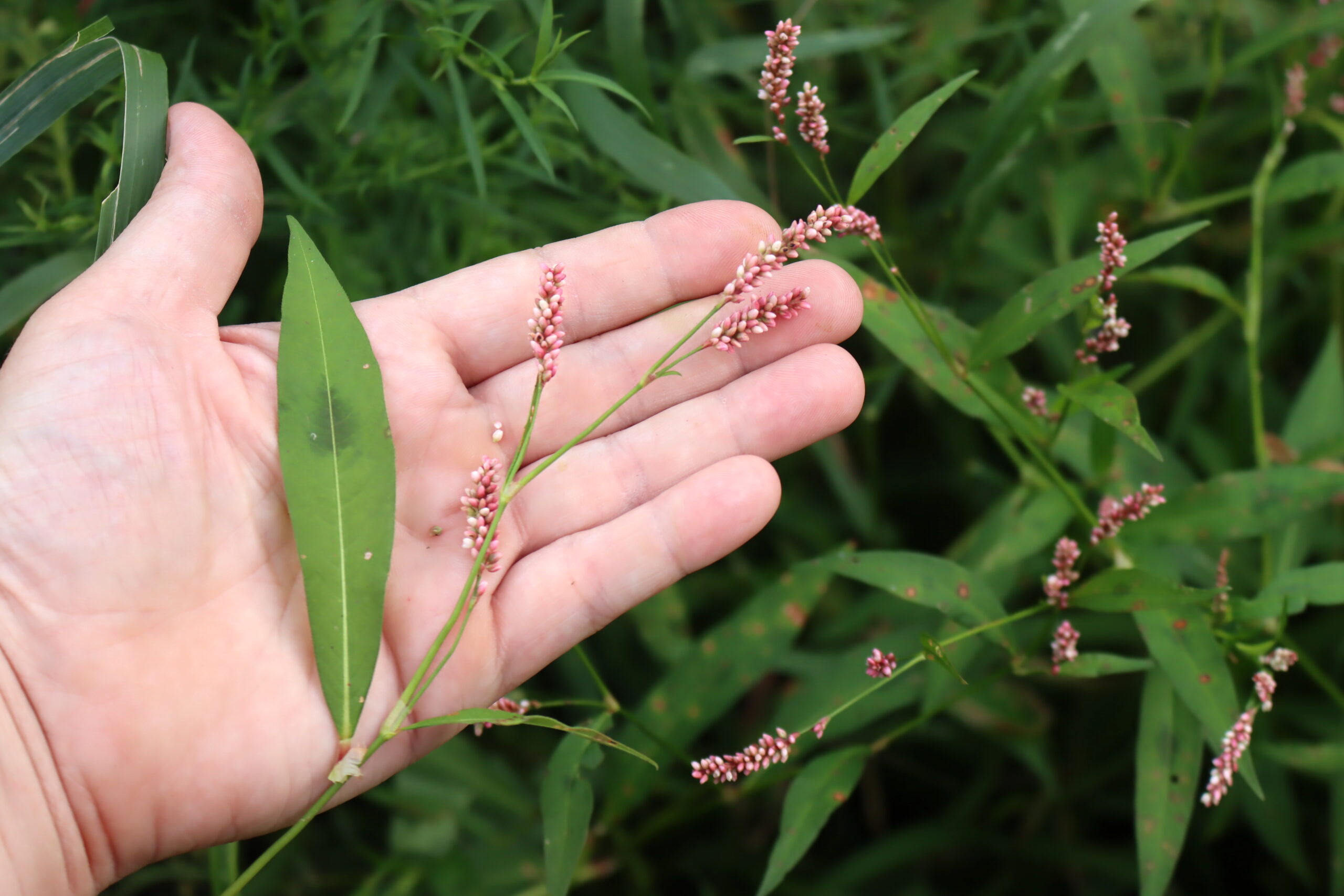
Table of Contents
What is Lady’s Thumb?
Lady’s Thumb (Persicaria maculosa) and other members of the Persicaria genus, often known as smartweeds or knotweeds, are members of the buckwheat or Polygonaceae family.
Most of the species are herbaceous, flowering, annual weeds. However, there are a few outliers in the genus, like Mile-A-Minute (Persicaria perfoliata), which is a larger annual vine, and Water Pepper (Persicaria hydropiper), which is still an herbaceous weed but typically grows in shallow water. A few Persicaria species are edible.
Members of this genus can grow worldwide. Some species, like Pennsylvania Smartweed (Persicaria pensylvanica), are native to the United States, while others, like Lady’s Thumb (Persicaria maculosa), have naturalized here.
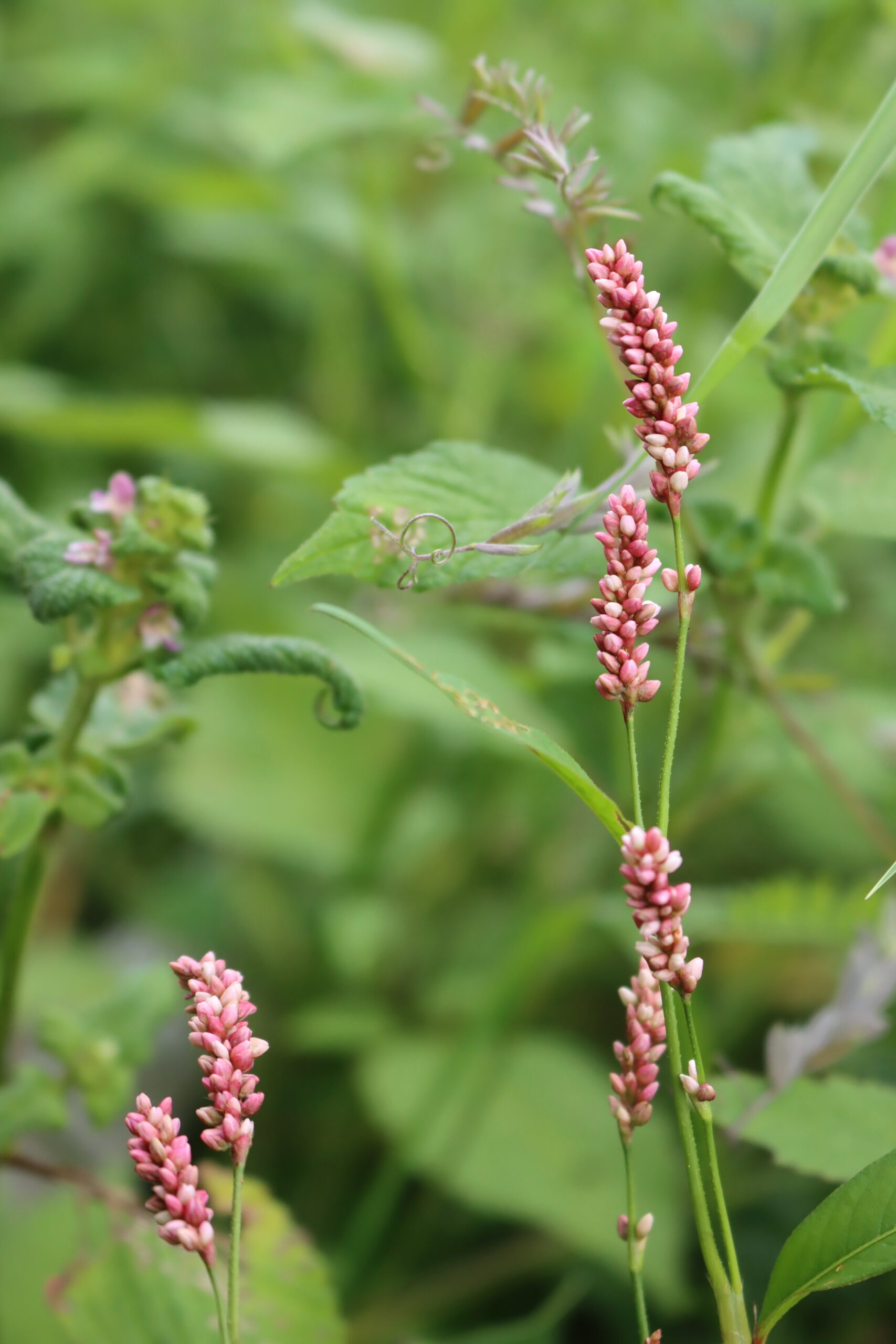
Is Lady’s Thumb Edible?
Lady’s Thumb and most other members of this genus are edible. Lady’s Thumb leaves, young shoots, flowers, and seeds are edible and are safe to eat raw or cooked.
Most members of the Persicaria genus contain some amount of oxalic acid. This compound gives sorrel and rhubarb their tangy, lemony flavor.
In large quantities, oxalic acid can make it difficult for the body to absorb minerals, so it’s best to eat these plants in moderation. Individuals with rheumatism, arthritis, gout, kidney stones, or hyperacidity can be especially sensitive to oxalic acid and should consult their doctor before consuming these plants.
You can also use Lady’s Thumb medicinally. Historically, herbalists often used Lady’s Thumb and other Persicaria species internally as tea. Some folks also used them externally as poultices and as insect repellent.
Some homesteaders find that their chickens enjoy Lady’s Thumb, too. However, some sources note that consumption of significant amounts of Lady’s Thumb can cause nitrate accumulation in horses, cattle, goats, and other grazing livestock.
A few folks reported photosensitivity after consuming or working with certain Persicaria species. As with any new plant, use common sense when working with these species for the first time, especially if you have other plant sensitivities.
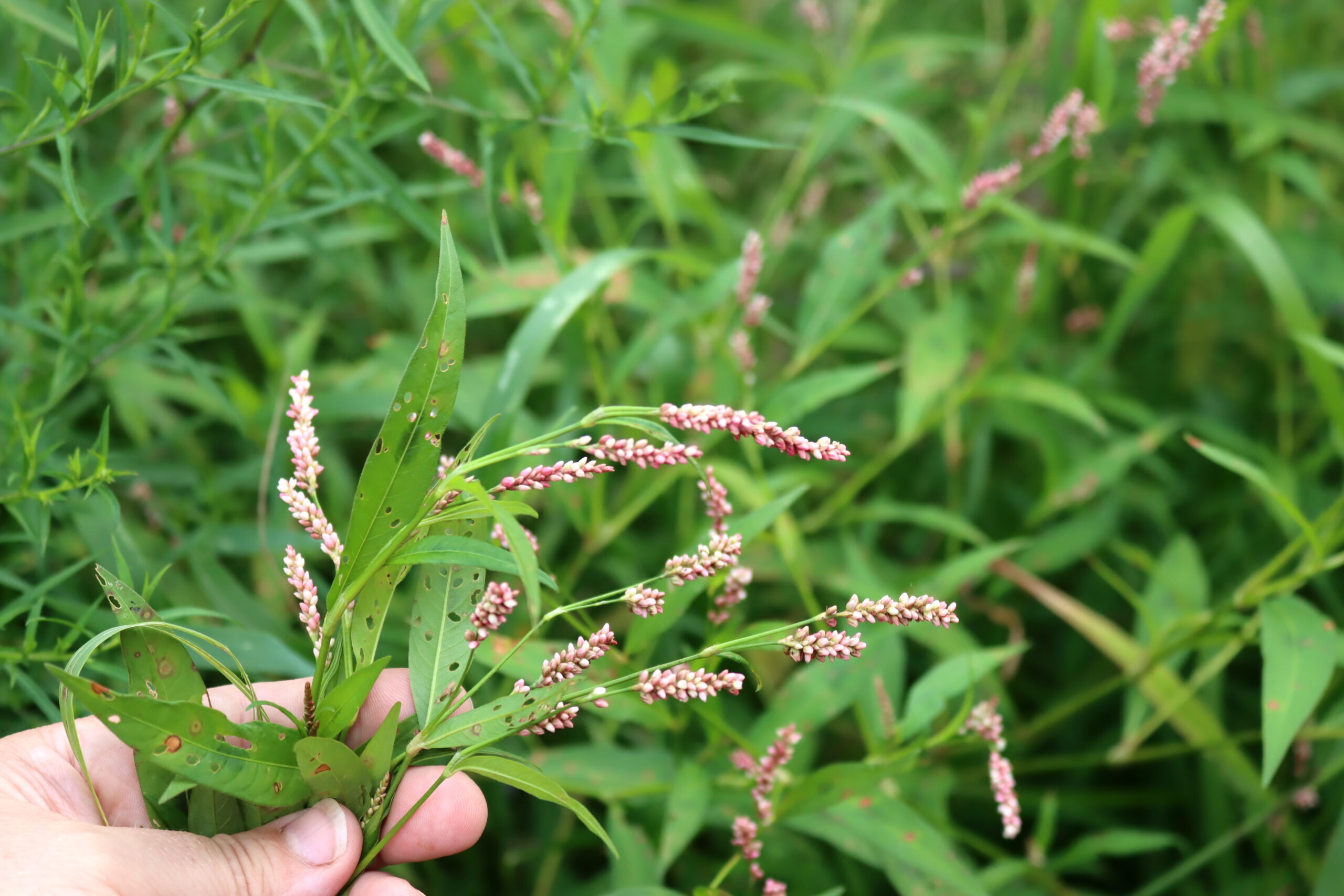
Lady’s Thumb Medicinal Benefits
The presence of Persicaria species worldwide means that many different cultures have adapted their local species and often some naturalized species into their traditional medicine practices.
Native Americans used these plants internally as tea to treat stomach pains and urinary issues. They also used them externally as a poultice to treat poison ivy and burns and rubbed the leaves on horses as a bug repellent.
Herbalists in China and India often use the moisture-loving Persicaria, Water Pepper. In India, they usually use this plant to treat intestinal worms, and modern research has backed up this usage, finding that “Water Pepper (Persicaria hydropiper) leaves possess noteworthy anthelmintic efficacy.”
Another study from the Indian Journal of Traditional Knowledge tested Lady’s Thumb (Persicaria maculosa) extract on rats with induced liver damage. The researchers found that the extract did help prevent liver damage and that the liver enzyme levels of the rats given the extract returned to near normal.
Lady’s Thumb (Persicaria maculosa) has some antibacterial properties, too. One study found that Lady’s Thumb was best at inhibiting the growth of a gram-positive bacteria called Bacillus cereus. This bacteria is a food-borne pathogen that can cause vomiting and diarrhea.
Herbalists have also used these plants for treating asthma, uterine bleeding, digestive issues, gynecological disorders, venereal disease, headaches, gout, fever, inflammation, hemorrhoids, and more. A wide review of research on Persicaria species supported some of these uses, finding that many of these species contain biochemical ingredients “with anticancer, antioxidant, analgesic, antileukemic, antimicrobial and tyrosinase inhibiting properties.”
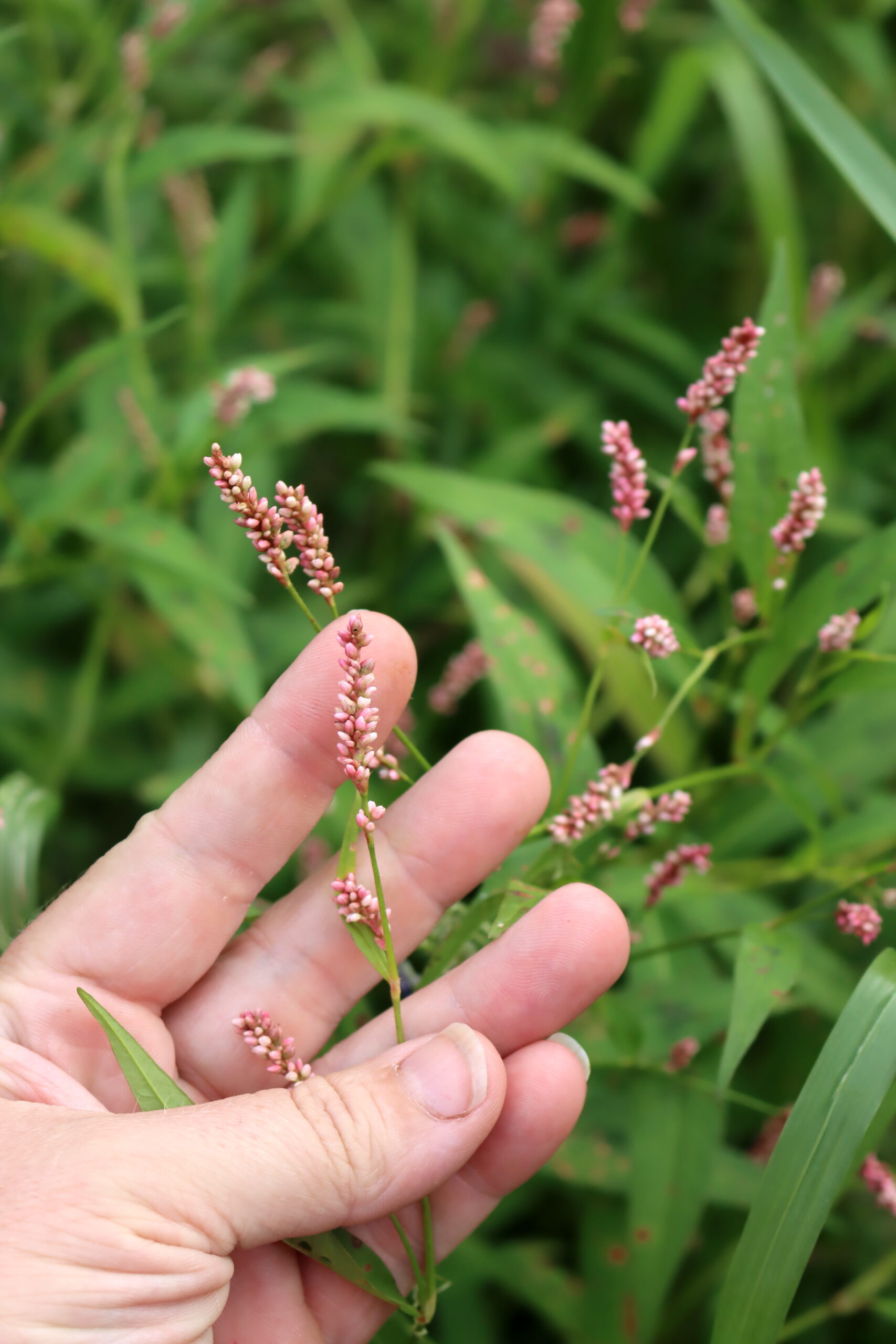
Where to Find Lady’s Thumb
The cosmopolitan plants occur nearly worldwide. You can find species like Lady’s Thumb (Persicaria maculosa) in its native range in Europe and Asia, North America, New Zealand, and Australia, where it has naturalized. Several species, like Pennsylvania Smartweed (Persicaria pensylvanica) and Pink Smartweed (Persicaria bicornis), are native to the United States.
Persicaria species generally thrive in moist soil, with some species like Water Pepper (Persicaria hydropiper) actually growing right in the water. Persicaria species generally do best with full sunlight, so it’s common to spot them growing in disturbed habitats like streambanks, roadsides, ditches, freshwater shorelines, and fallow fields.
When to Find Lady’s Thumb
Lady’s Thumb and other Persicaria are summer annuals. They usually come up in the spring and grow until fall frost. You may find them growing in April or even earlier in southern climates, but they may not appear until May or June in northern areas.
Their tender young shoots and leaves are lovely in spring and early summer, though you can still eat the whole plants in summer and early fall.
The flowers typically bloom between June and September, depending on the species and location. The blooms are also tasty, as are the small seeds that follow them in later summer and fall.
Identifying Lady’s Thumb
As Persicaria is a relatively large genus of plants, the different species have a wide range of attributes. For the purposes of this article, we will primarily focus on Lady’s Thumb and the other Persicaria species that can be found in North America and share its general characteristics, properties, and uses, including Pink Smartweed (Persicaria bicornis) and Pennsylvania Smartweed (Persicaria pensylvanica).
These annual weeds usually have an erect but slightly floppy growth pattern. Especially in early summer, they tend to form dense patches that outcompete other weeds. Their thin leaves and pink flower spikes help foragers to pick them out.
Lady’s Thumb Leaves
Lady’s Thumb and many Persicaria species have simple, alternate, narrowly ovate to lance-shaped leaves. They have a noticeable pinnate venation. The leaves are held on short petioles and may be close to stalkless. They’re usually green and 2 to 7 inches long.
Lady’s Thumb (Persicaria maculosa) and Pennsylvania Smartweed (Persicaria pensylvanica) leaves often have a black, dark brown, or purplish spot or v-shape blotch near the center.
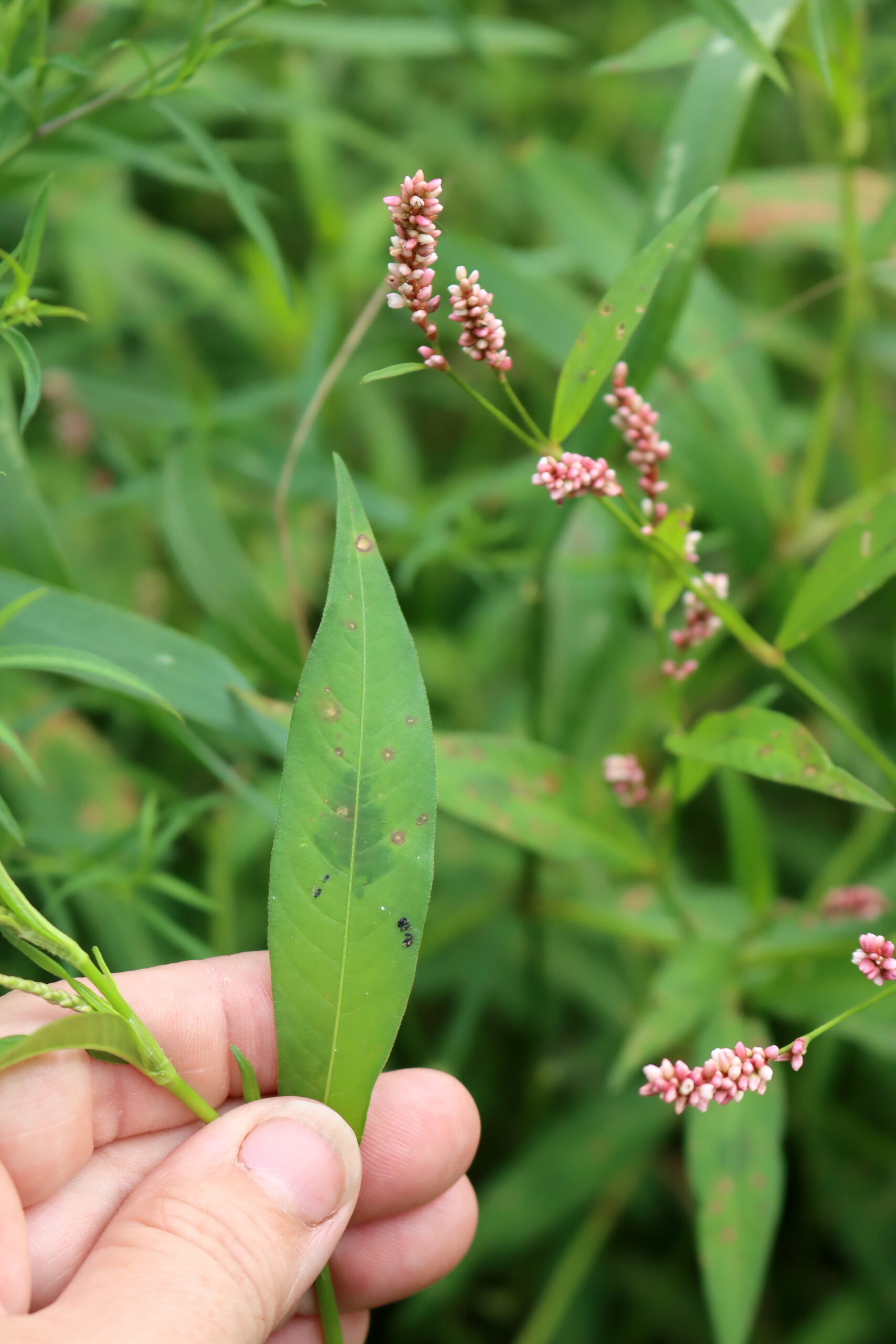
Lady’s Thumb Stems
Lady’s Thumb generally doesn’t get any taller than 3.3 feet, but other Persicaria species like Pennsylvania Smartweed (Persicaria pensylvanica) may reach about 6.5 feet tall.
The stems are usually light green or reddish and may be branching or unbranched. They tend to grow erect but may flop over a bit. The stems have swollen nodes and often root at the lower nodes.
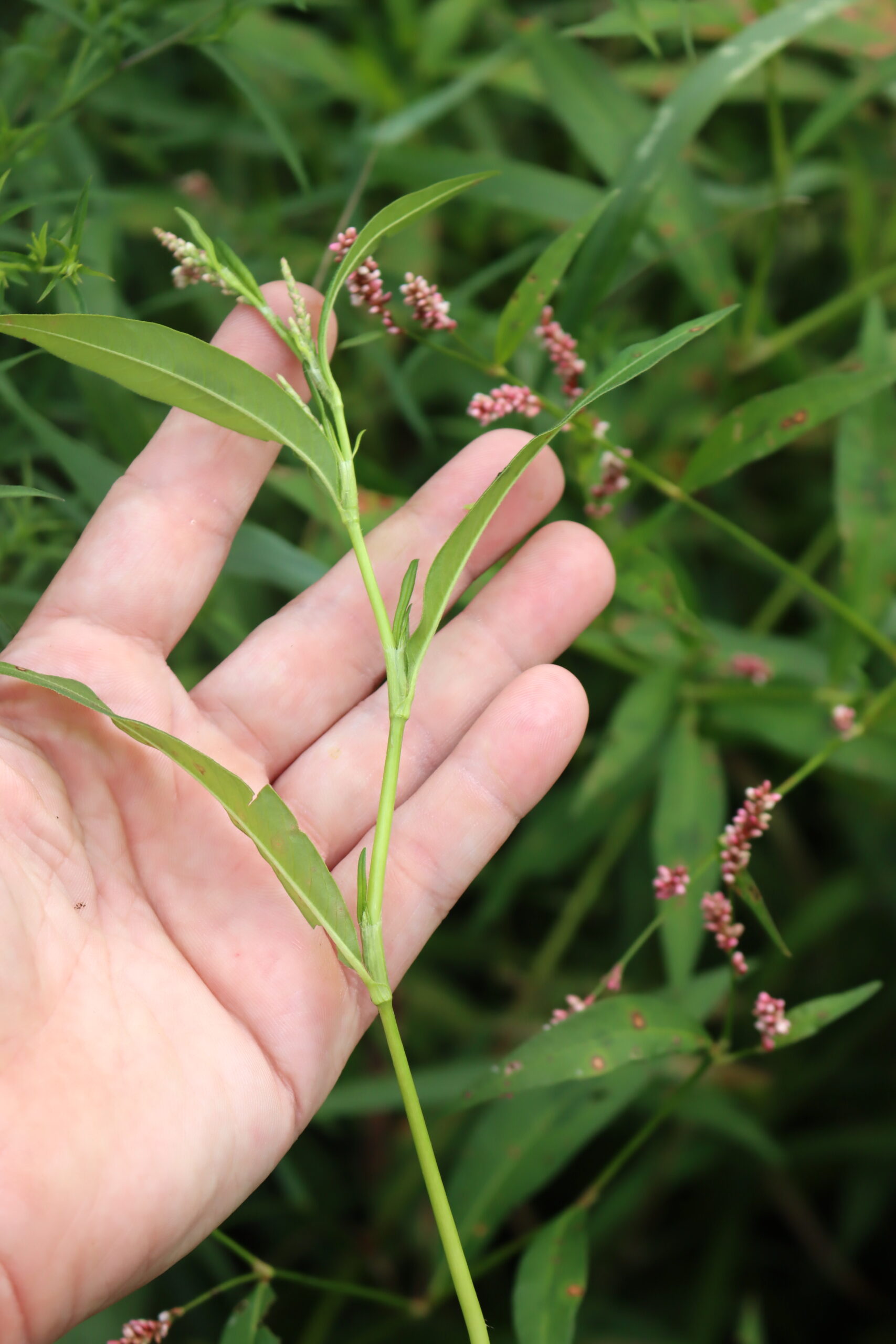
Lady’s Thumb Flowers
Persicaria flowers are one of the attributes that vary significantly with species. Usually, the tiny flowers grow densely packed at the top of a spike. These flower spikes grow from the top of the stem or the leaf axils.
The flowers are usually pink, white, or greenish and composed of 5 sepals.
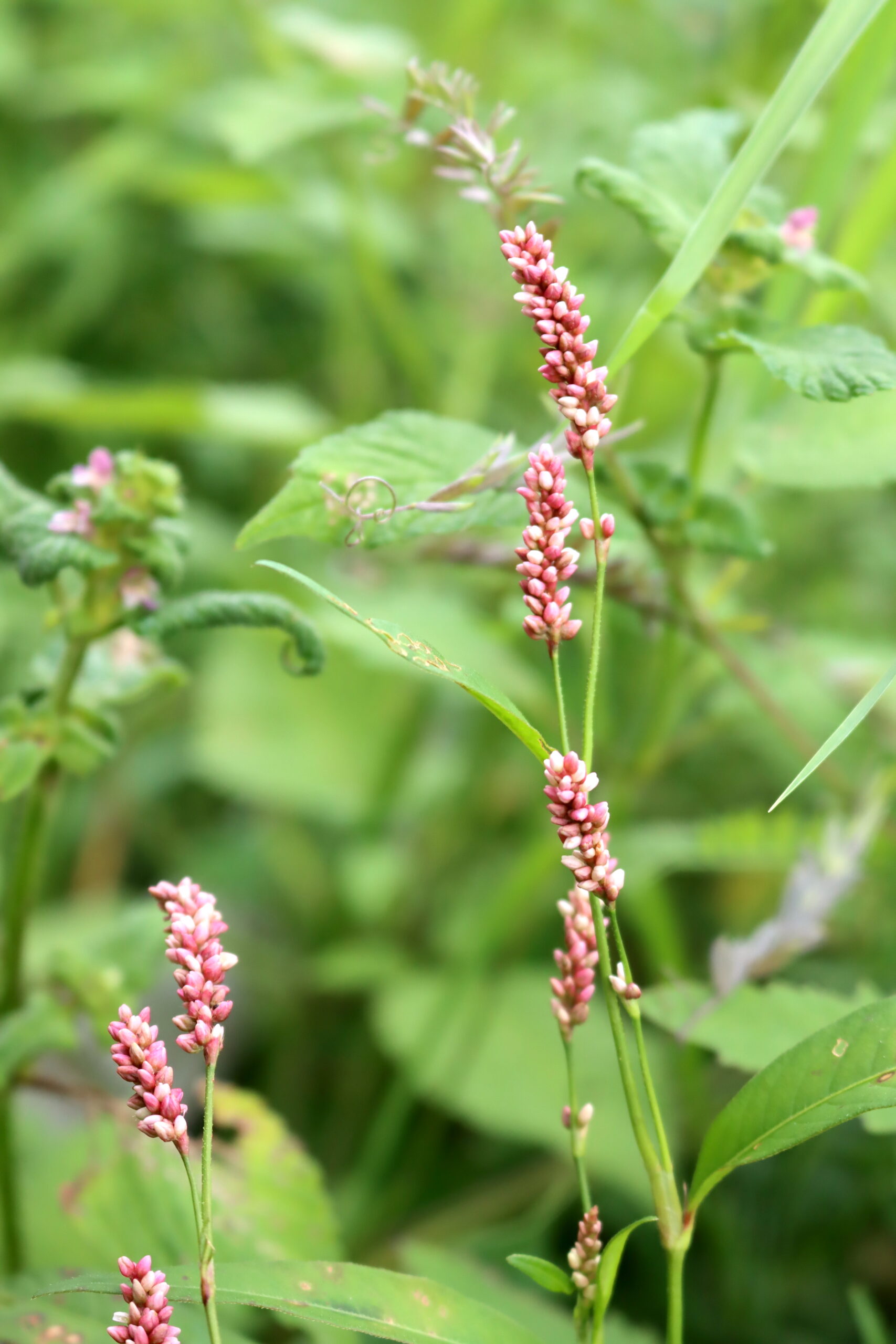
Lady’s Thumb Seeds
Persicaria flower spikes give way to seed heads that mature as the flowers dry to brown. The seeds are usually small, dark brown to black, shiny, and almost round.
Lady’s Thumb Look-Alikes
Lady’s Thumb may be mistaken for Japanese Stilgrass (Microstegium vimineum). However, you can differentiate the two with a few key features:
- Japanese Stiltgrass leaves have parallel venation.
- Japanese Stiltgrass has inconspicuous spikes of tiny greenish flowers similar to other grass species.
- Japanese Stiltgrass has wiry stems with less fleshy nodes.
- Japanese Stillgrass has weak, shallow root systems and is easy to pull.
Lady’s Thumb can also be mistaken for Basketgrass (Oplismenus hirtellus). Thankfully, it also differs in a few noticeable ways:
- Basketgrass leaves have parallel venation.
- Basketgrass leaves appear wavy or ribbed.
- Basketgrass flower spikelets have long, sticky awns or hair or bristle-like structures.
- Basketgrass usually grows in moist woodlands rather than open areas.
Lastly, Lady’s Thumb can be confused with Deer Tongue or Panic Grass (Dichanthelium spp.). Here are a few ways you can tell them apart:
- Deer Tongue leaves have parallel venation.
- Deer Tongue leaves clasp around the stem.
- Deer Tongue has loose, spreading flower and seed heads.
Ways to Use Lady’s Thumb
Lady’s Thumb and other Persicaria species are easy to use as greens. Depending on the species, they have lovely lemony or peppery flavors, and are easy to incorporate into salads or cooked dishes like stir-fries, soups, and sauces. You can also use the flowers in a similar way. They make a beautiful garnish or addition to salad.
Water Pepper (Persicaria hydropiper) is often used in Japanese cuisine. The leaves are used as a vegetable or to garnish tempura, sushi, or sashimi. It’s also used to create water pepper sauce or tade-zu. You can use the traditional Water Pepper or experiment with other Persicaria species you find.
The seeds are also tasty and are safe to eat or raw or cooked. They’re excellent for sprinkling over stir-fries, breads, and other dishes or incorporating into baked goods like muffins, granola, and cookies. As a member of the buckwheat family, they also make tasty flour. Unfortunately, it takes a good bit of effort to gather enough.
To harvest the seeds, wait until about 80% of the flowers have turned brown. Then, use your fingers to slide up the stalk, pulling them off into a bag or container. You can use these seeds fresh or lay them out for a week or two in a single layer, out of direct sunlight, to finish drying. You can winnow your seeds if desired, but many foragers leave the chaff in with the seeds.
You can also use these plants medicinally. For internal use, you can make teas and tinctures with leaves, stems, and flowers of Persicaria species. For external use, you can also grind or chew them into poultices for treating minor burns, poison ivy, and other skin irritations. They may also have some benefits as a natural bug repellent.
Fiber artists can also use Lady’s Thumb with an alum mordant to make a yellow dye.
Lady’s Thumb Recipes
- Visit The Homesteading Hippy for a few great Lady’s Thumb recipes. Learn to make Lady’s Thumb Stir Fry, Roasted Peppers with Lady’s Thumb Seeds, and Lady’s Thumb Tea.
- You can also use Herbal Picnic’s recipe to create Smartweed cold infusions.
- Add foraged flavor to your snacks with this delicious Smartweed Spread recipe from Lauren Liess. She recommends it on tomato slices or crusty bread.
- Spice things up with this Japanese Water Pepper Style Sauce (Tade-Zu) recipe from The Forager Chef.
- Turn your Water Pepper into Wild Wasabi with this recipe from Hunt, Gather, Cook.
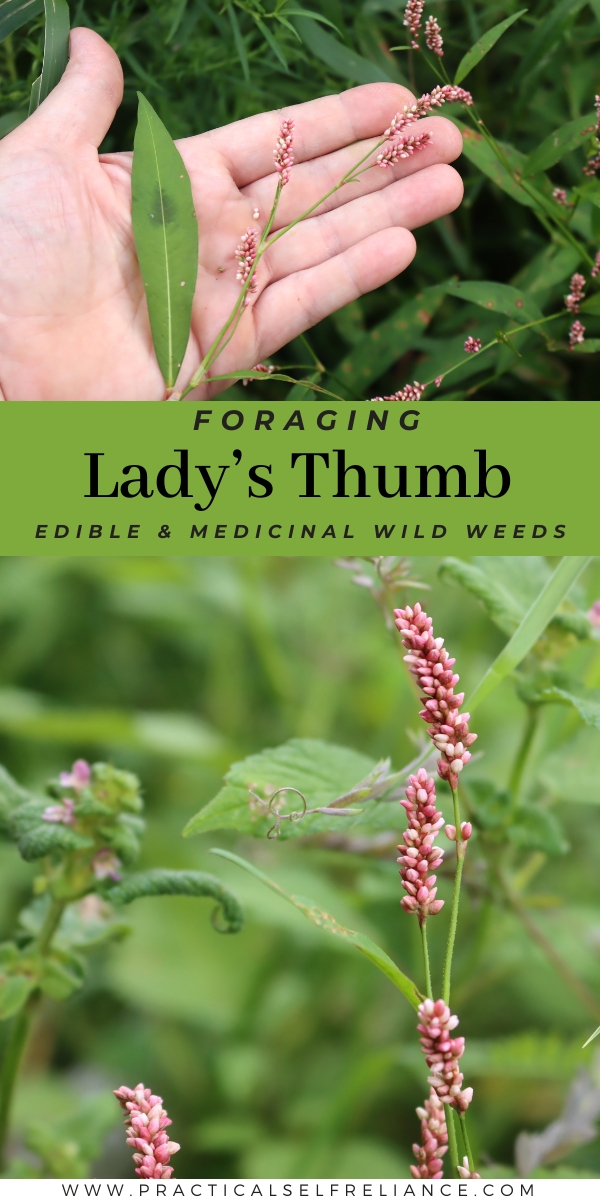

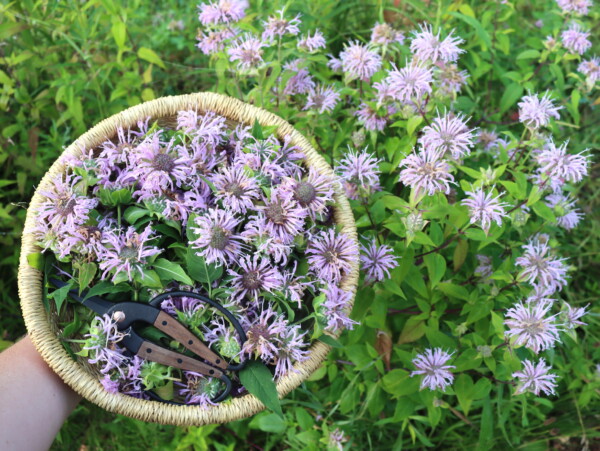
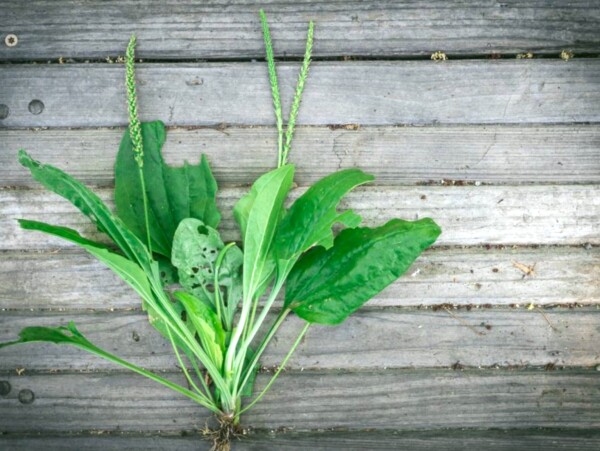
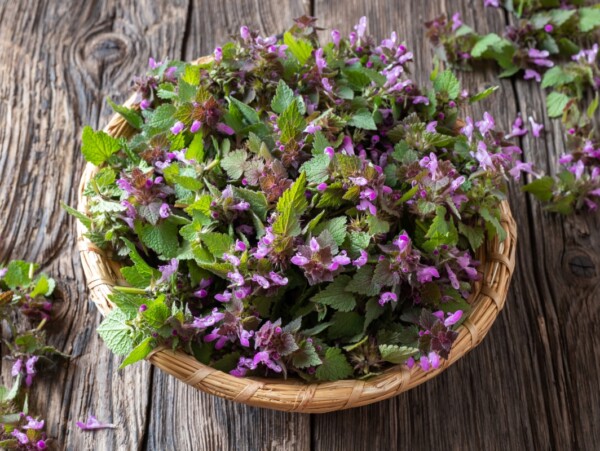
Thank you Ashley for this article, I’ve had this growing out my back door all summer and I didn’t know what it was. Now I do, and I’m glad it’s growing there. I wondered why I didn’t see any fleas this year or bugs by it.
Thanks